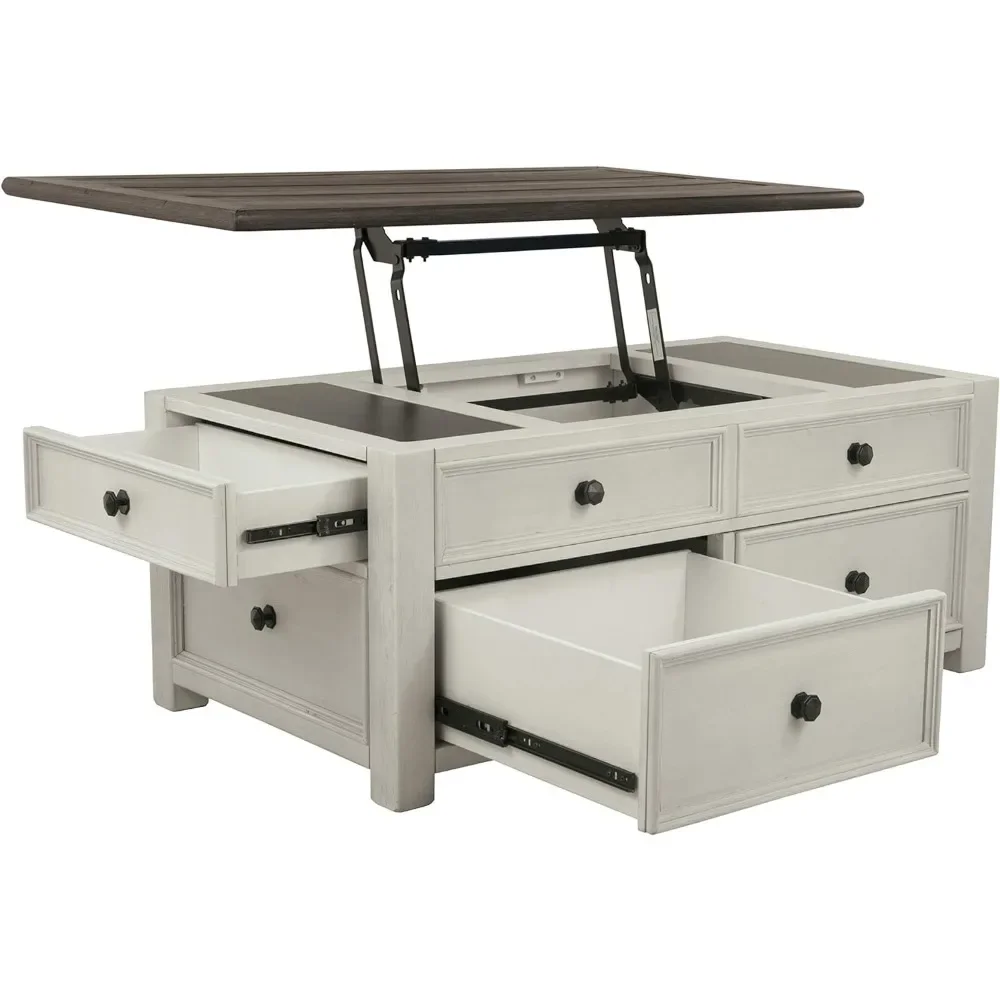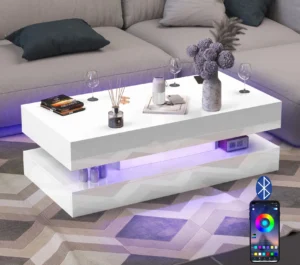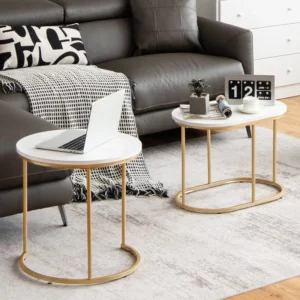How Lift-Top Coffee Tables Transform Small Living Spaces
Living in a small space presents unique challenges – limited surface area for daily activities, constant clutter battles, and the frustration of furniture that serves only one purpose. As urban apartments continue to shrink (with average living spaces decreasing by nearly 10% in major cities over the past decade), finding furniture that does double or even triple duty has become essential rather than optional.
Enter the lift-top coffee table – an innovative solution specifically designed to maximize functionality without sacrificing precious square footage. Unlike traditional coffee tables, these versatile pieces feature an ingenious mechanism that allows the tabletop to raise and extend, transforming a simple surface into an ergonomic workstation, dining area, or hobby space within seconds.
What makes these tables truly remarkable is their ability to adapt to your changing needs throughout the day. The hidden lifting mechanisms – whether spring-assisted, hydraulic, or counterbalanced – provide smooth transitions between functions while maintaining the aesthetic appeal of a standard coffee table when not in use.
In this comprehensive guide, we’ll explore how functional lift-top coffee tables can revolutionize small-space living, examine their unique features, and help you determine if this space-maximizing solution is right for your compact home. We’ll also showcase some exceptional mid-century modern lift-top coffee tables that combine style with superior functionality.
The Anatomy of a Lift-Top Coffee Table: Form Meets Function
Understanding what makes lift-top coffee tables unique requires examining their innovative construction. At the heart of these versatile pieces is the lifting mechanism that separates them from conventional tables.
Most lift-top tables employ one of these common mechanisms:
– Spring-assisted lifts: Offer smooth operation with minimal effort
– Hydraulic systems: Provide controlled, gradual movement and excellent stability
– Gas lift mechanisms: Ensure silent operation and consistent performance over time
When raised, the top surface typically extends 6-10 inches higher than its resting position, creating an ideal height for laptop work, dining, or crafting while seated on a sofa or chair. This elevating everyday living feature transforms an ordinary surface into an ergonomic workstation.
For small spaces, dimensions matter significantly. Most lift-top tables range from 36-48 inches in length and 22-30 inches in width, with some compact models designed specifically for tiny apartments. Square coffee tables often work particularly well in limited spaces, offering balanced proportions and maximizing corner placement opportunities.
The structural components include not only the lifting hardware but also cleverly designed storage compartments beneath the surface, ensuring every inch serves a purpose in space-constrained environments.
5 Essential Benefits of Lift-Top Coffee Tables for Small Spaces
Small-space dwellers face unique challenges that standard furniture simply doesn’t address. Lift-top coffee tables offer specific advantages that directly combat these common pain points. The following benefits demonstrate why these versatile pieces have become increasingly popular for compact living environments.
Each benefit directly addresses a specific challenge of small-space living, creating a truly multi-purpose lift-top coffee table that adapts to your needs rather than forcing you to adapt to its limitations.
1. Space Multiplication: One Piece, Multiple Functions
In small spaces, every square foot counts. A lift-top coffee table effectively multiplies your functional space by serving multiple purposes without increasing its physical footprint. This space efficiency creates a more open, less cluttered environment while expanding functionality.
A single lift-top table can function as:
– A traditional coffee table for everyday use
– A proper-height dining surface for meals (eliminating the need for a separate dining table)
– An ergonomic workstation for laptops and paperwork
– A craft or hobby surface at comfortable height
– A game table for entertainment
By eliminating the need for separate pieces like a dedicated desk or dining table, you can save approximately 10-15 square feet of precious floor space. This substantial space savings allows for better traffic flow and reduces the visual and physical crowding that makes small rooms feel even smaller.
The transformation between functions typically takes just seconds, allowing you to adapt your space to different needs throughout the day. This aspect of space-saving coffee tables represents a smart approach to small space living.
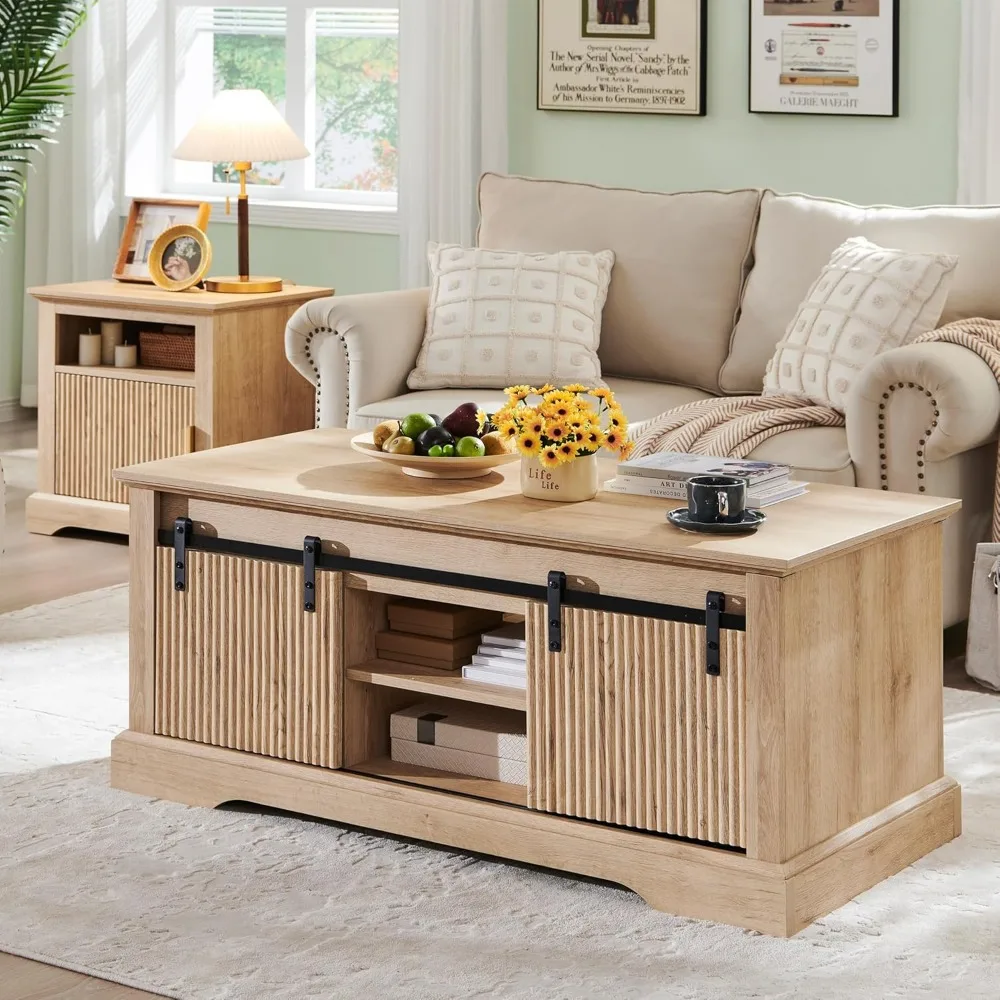
2. Hidden Storage Solutions: Conquering Clutter
Small spaces quickly become overwhelmed by everyday items without adequate storage. Lift-top coffee tables address this challenge with their hidden compartments beneath the raising surface.
These concealed storage areas typically offer:
– 2-4 cubic feet of storage capacity (equivalent to a small bookshelf)
– Easy access to frequently used items
– Dust protection for stored belongings
– Visual clutter reduction by keeping items out of sight
The storage areas perfectly accommodate items like:
– Remote controls, magazines, and books
– Gaming controllers and accessories
– Extra throw blankets and pillows
– Work supplies and documents
– Craft and hobby materials
This hidden storage capability revolutionizes living room organization by providing a designated home for items that might otherwise create visual noise. The psychological benefit of reduced visual clutter shouldn’t be underestimated – it makes a small space feel instantly more spacious and calming.
3. Ergonomic Advantages: Comfort in Confined Quarters
Standard coffee tables force uncomfortable hunching when used for activities like eating or working. The lift-top design eliminates this problem by bringing the surface to you, rather than forcing you to adapt to an uncomfortable fixed height.
Key ergonomic benefits include:
– Raising the work surface to 24-30 inches from the floor (ideal for seated activities)
– Reducing neck strain by elevating screens to a more natural viewing angle
– Minimizing hunched posture during meals or computer use
– Allowing proper arm positioning during extended activities
The ergonomic height adjustment is particularly valuable in small apartments where residents often use sofas for multiple activities beyond seating. This design makes the furniture adapt to human needs rather than forcing the human to adapt to furniture limitations.
For those who frequently work from home in limited space, revolutionizing home office arrangements with an adjustable surface height can significantly improve comfort and productivity during long work sessions.
4. Adaptability for Multiple Activities: The Small Space Swiss Army Knife
Small spaces must adapt quickly to different needs throughout the day. Lift-top tables excel at rapid transformation between functions, allowing one area to serve many purposes.
A typical day might see a lift-top table transform through these scenarios:
1. Morning: Coffee and breakfast surface at comfortable dining height
2. Mid-morning: Elevated work platform for laptop use
3. Afternoon: Lowered coffee table for casual relaxation
4. Evening: Raised dining surface for dinner
5. Night: Game or hobby table for entertainment
This adaptability is particularly valuable for households with multiple members who have different needs. It allows the same space to comfortably accommodate various activities without compromise.
When selecting the right piece, considering the best shape coffee table for small space needs will ensure maximum functionality with minimal footprint. Square and rectangular shapes each offer unique advantages depending on your room layout and typical activities.
5. Design Versatility: Style That Doesn’t Compromise Space
Functionality shouldn’t come at the expense of style. Modern lift-top tables are available in diverse designs that complement any décor while maintaining their space-saving benefits.
Design options include:
– Mid-century modern styles with clean lines and tapered legs
– Industrial designs featuring metal accents and rustic wood
– Minimalist approaches with hidden mechanisms and sleek profiles
– Traditional styles with classic details and warm finishes
In small spaces, the visual weight of furniture significantly impacts how spacious a room feels. Many modern lift-top coffee table designs feature:
– Raised legs that create visual space underneath
– Lighter color options that don’t dominate the room
– Streamlined profiles that avoid visual heaviness
– Proportional scaling for smaller environments
The right lift-top table can serve as an attractive focal point while remaining appropriately scaled for the space – proving that compact living doesn’t require sacrificing style for functionality.
Strategic Placement: Optimizing Your Small Space Layout
The location of your lift-top coffee table significantly impacts its functionality and your overall room flow. Strategic placement ensures you’ll get maximum benefit while avoiding potential space conflicts.
Consider these placement strategies:
– Position the table 18-24 inches from your sofa for comfortable reach
– Ensure 24-30 inches of clearance in front of the table when the top is fully extended
– Account for traffic patterns when the table is in various positions
– Consider viewing angles to entertainment centers or focal points
– Place in relation to natural light sources for work functions
In studio apartments or open concept spaces, a well-placed lift-top table can subtly define separate functional zones without physical walls. For instance, positioning between a sofa and television area creates a natural division between relaxation and dining/working spaces.
Small coffee tables designed specifically for compact spaces provide these functional benefits while maintaining proper scale. Remember that even in small rooms, allowing some breathing space around furniture creates a more open feeling than cramming oversized pieces too tightly.
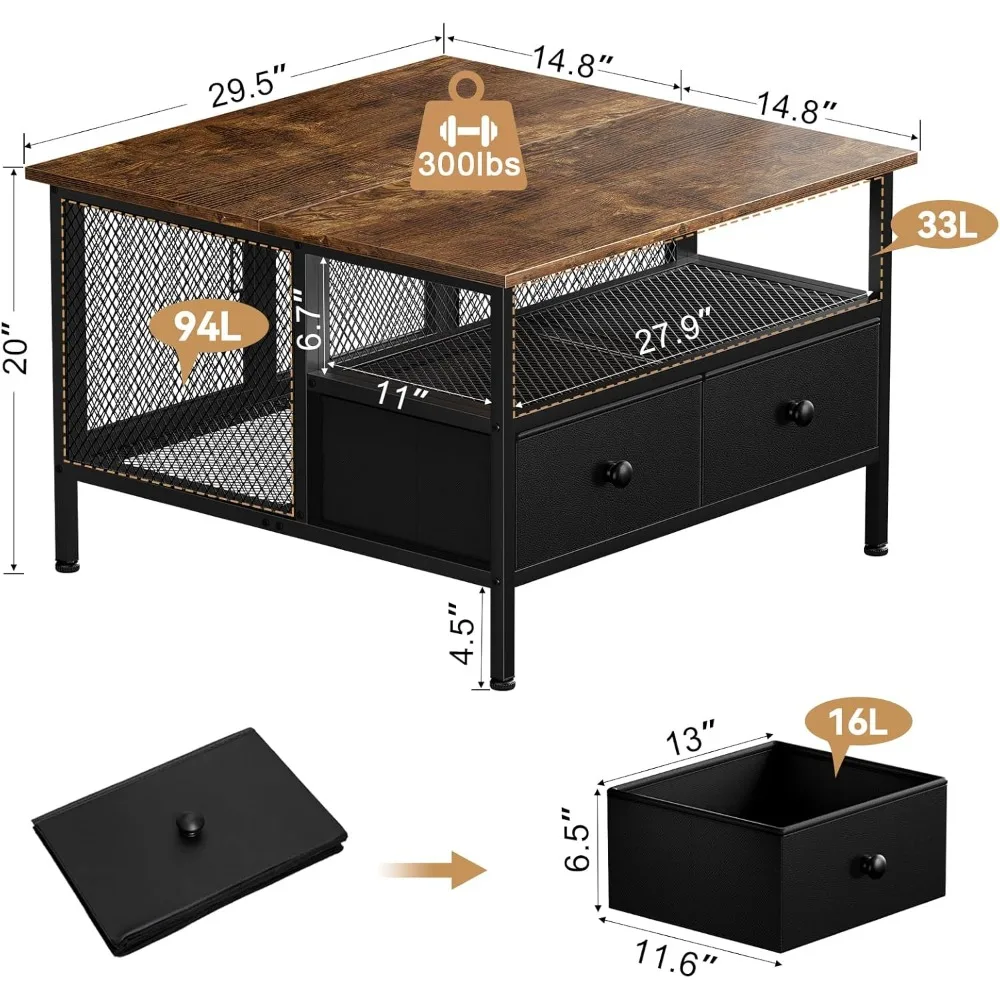
Essential Considerations: What to Look for Before Purchasing
Before investing in a lift-top coffee table for your small space, certain key factors deserve careful attention to ensure you select the right piece for your specific needs.
Measurement and sizing considerations:
– Measure your available space, accounting for traffic flow
– Consider clearance needed when the top is fully extended (typically 24-30 inches)
– Verify weight capacity of the lifting mechanism (typically 15-40 pounds)
– Check extended height to ensure compatibility with your seating
Quality indicators to evaluate:
– Smooth, consistent operation of the lifting mechanism
– Sturdy construction with minimal wobbling when extended
– Solid wood construction for durability and longevity
– Quality hardware that will withstand frequent use
Practical features to consider:
– Storage compartment size and accessibility
– Locking mechanisms to secure the raised position
– Ease of assembly and included instructions
– Balance between aesthetic appeal and functionality
Understanding the differences between lift-top and fixed-top coffee tables helps clarify which option better suits your specific space constraints and lifestyle needs. While lift-tops offer additional functionality, they also require more clearance when in use and typically represent a higher investment.
Real-Life Scenarios: Lift-Top Tables in Action
To truly appreciate the versatility of lift-top coffee tables in small spaces, consider these real-world applications:
Studio Apartment Transformation:
In a 400-square-foot studio, a resident eliminated both a desk and dining table by incorporating a lift-top coffee table. The piece serves as a casual coffee table, transforms into a dining surface for two during meals, and becomes a work-from-home station during business hours. The result: approximately 20 square feet of reclaimed floor space and a more open, flexible layout.
Work-From-Home Solution:
A remote professional living in a one-bedroom apartment uses a lift-top table as her primary workstation. During off-hours, the table remains in its lowered position as a standard coffee table. During work hours, the raised surface positions her laptop at proper ergonomic height, with documents stored in the compartment below. This arrangement eliminates the need for a dedicated home office in a space-constrained apartment.
Entertaining Enhancement:
Hosting guests in small spaces often means improvising dining arrangements. With a rectangular coffee table featuring a lift-top design, one homeowner can comfortably serve dinner for four by raising the surface and bringing in additional seating. The extended surface provides enough area for plates, glasses, and shared dishes without requiring a permanent dining table that would otherwise consume valuable space.
Mid-Century Modern Solid Wood Coffee Tables, Mid-Century Modern Teak Coffee Tables
$879.95 Select options This product has multiple variants. The options may be chosen on the product pageMid-Century Modern Danish Coffee Tables, Mid-Century Modern Oval Coffee Tables, Mid-Century Modern Solid Wood Coffee Tables
$390.05 Select options This product has multiple variants. The options may be chosen on the product pageMid-Century Modern Lift Top Coffee Tables, Mid-Century Modern Square Coffee Tables
$454.73 Select options This product has multiple variants. The options may be chosen on the product pageMid-Century Modern Large Coffee Tables, Mid-Century Modern Rectangular Coffee Tables
$603.26 Select options This product has multiple variants. The options may be chosen on the product pageMid-Century Modern Marble Top Coffee Tables, Mid-Century Modern Rectangular Coffee Tables, Mid-Century Modern White Coffee Tables
Price range: $163.28 through $189.22 Select options This product has multiple variants. The options may be chosen on the product pageMid-Century Modern Nesting Coffee Tables, Mid-Century Modern Nesting Table Sets
$361.45 Select options This product has multiple variants. The options may be chosen on the product page
Potential Limitations: A Balanced Perspective
While lift-top coffee tables offer numerous advantages for small spaces, an honest assessment includes recognizing potential limitations:
Weight restrictions: Most mechanisms safely support 15-40 pounds when extended. Exceeding this capacity may damage the lifting hardware or create instability.
Maintenance considerations: Moving parts require occasional maintenance and may eventually wear with heavy use. Look for models with replaceable hardware for longer lifespan.
Space requirements: When extended, these tables need additional clearance in front of or behind them (depending on the direction of extension). This temporary footprint expansion must be accommodated in your space planning.
Price factors: Lift-top tables typically cost 20-40% more than comparable fixed-top designs due to the additional mechanical components and construction complexity.
Surface stability: Some models may have slight movement when in the raised position, which could be a consideration for precision tasks.
For extremely limited spaces or specific needs, alternative solutions like nesting coffee tables might better serve certain situations while still maximizing square footage efficiency.
Complementary Solutions: Enhancing Your Small Space Strategy
While a lift-top coffee table provides significant space-saving benefits, complementing it with other thoughtfully selected items creates a comprehensive small-space solution.
Consider pairing your table with these space-optimizing elements:
– Wall-mounted lighting instead of floor lamps to free up floor space
– Ottomans with storage that can serve as additional seating
– Floating shelves that provide storage without footprint
– Slim side tables that slide under sofa arms when not needed
– Multi-purpose accessories like trays that transfer from table to lap
Organizational accessories that enhance your lift-top table might include:
– Compartment dividers for the storage section
– Cable management solutions for work setup
– Cushioned lap desks that store inside when not in use
Creating visual cohesion in multi-functional spaces helps maintain a sense of order despite the room serving multiple purposes. Cohesive color schemes and consistent design elements help tie together different functional zones.
The principles that make lift-top tables effective can be applied to other furniture choices as well. Maximizing small spaces with nesting tables follows similar logic – furniture that adapts to changing needs rather than remaining static.
Is a Lift-Top Coffee Table Right for Your Small Space?
After exploring the many benefits and considerations, how do you determine if a lift-top coffee table is the right solution for your specific small space challenges?
Consider these key questions:
– Do you regularly need additional work or dining surface?
– Is your living area serving multiple functions throughout the day?
– Would hidden storage help reduce visible clutter in your space?
– Do you find yourself hunching over a traditional coffee table for activities?
– Is floor space at a premium in your current layout?
If you answered yes to several of these questions, a lift-top design likely offers significant advantages for your situation. The initial investment typically delivers long-term value through enhanced functionality and space optimization.
The true magic of these versatile pieces lies in their ability to adapt to your changing needs without changing your furniture arrangement. By addressing multiple small-space challenges simultaneously – surface area limitations, storage constraints, and ergonomic concerns – a quality lift-top coffee table represents a thoughtful solution to compact living.
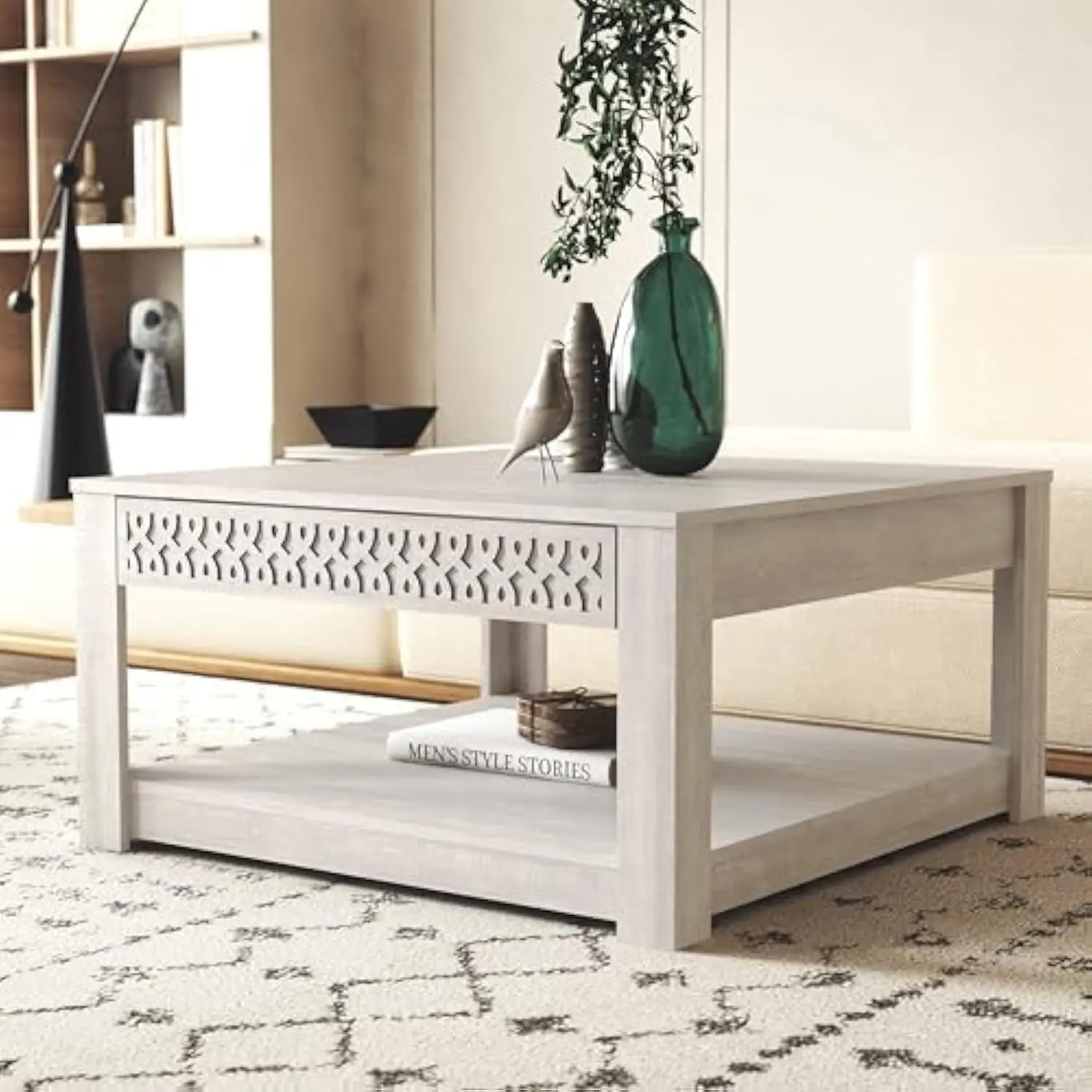
At Hearth Forms, we understand that small space living doesn’t mean compromising on functionality or style. The right furniture can transform how you experience your compact living area, making it feel more spacious, organized, and adaptable to your lifestyle needs.

